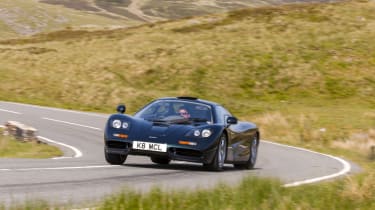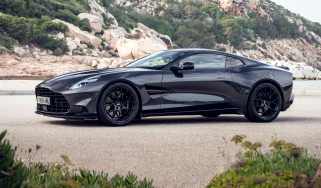The original McLaren F1 press release in full - Every detail of the incredible V12 supercar - McLaren F1 chassis and structure
As McLaren re-publishes the full, original 1992 press release for its F1 supercar, it's a perfect time to celebrate the F1, we think
THE McLAREN F1 IS DESIGNED FOR GREATER TORSIONAL AND BENDING STIFFNESS THAN ANY OTHER PRODUCTION CAR EVER BUILT
The McLaren F1’s advanced-composites monocoque comprises the entire chassis/body unit, combining both uni-directional and woven carbon fibre materials. Most primary structure panels are double-skinned and stiffened by aluminium honeycomb. The McLaren f1 possesses immense torsional and bending stiffness.
The primary structure was designed and developed using a computer aided design finite element analysis programme to optimise both material thickness and fibre orientation for maximum strength, stiffness and safety – sophistication impossible with traditional chassis materials.
The monocoque’s primary strength derives from two longitudinal large-section floor beams, uniting lateral cockpit bulkheads. Behind the driver’s seat, a sturdy pier rises integrally with the engine air-box to provide exceptional roll-over protection, integrated into the roof and A- and B-pillars, to form an enormously strong ‘survival cell’. This is augmented by a tailor-made driver restraint harness and laminated fixed cabin glass throughout.
Front and rear crash structures – composite forward mouldings and the Inconel rear silencer box – far exceed all legal requirements worldwide. The Formula 1 specification puncture-proof fuel cell is also safely centre-mounted.
The engine doubles as a load-bearing chassis member, mounted against the tear cockpit bulkhead and attached to two monocoque shoulder beams at the rear.
In each front engine mounting, intricately tailored semi-flexible bushes rigidly transmit traction and braking loads, while absorbing vibration and noise. All major torsional loads from the rear suspension are similarly absorbed via flexible bushes uniting each cylinder head to the shoulder beams.
The totally-integrated carbon structure has been created entirely within McLaren cars’ own advanced composites facility, incorporating materials and techniques at the forefront of this technology – several of them unique in road vehicle manufacture.



